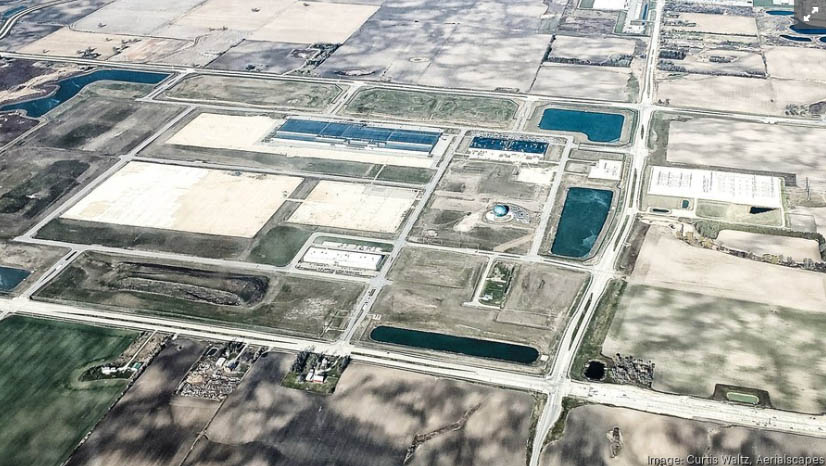Executives with Zero Zone, which manufactures refrigeration systems for food retailers, are exploring ways to apply artificial intelligence to enhance the company’s products and services.
The company in Waukesha County’s North Prairie already initiated preliminary discussions on how to adopt the technology with input from the University of Wisconsin-Milwaukee’s Connected Systems Institute. Then news broke that the institute will partner with Microsoft Corp. experts to help design and prototype AI and cloud solutions for 270 companies by 2030.
“It’s great to have an idea and a vision, but you still have to develop it and make it work for your business,” Kormanik said. “The UWM CSI and the Microsoft lab will certainly help us and the wider business community with that reality.”
After word spread May 8 that Microsoft planned to invest $3.3 billion in data centers in Racine County, the excitement was instant in southeast Wisconsin’s tech and advanced manufacturing industries.
The data centers represent a big deal in their own right, providing southeast Wisconsin businesses the ability to buy access to nearby capacity to feed data-hungry artificial intelligence activities. But Microsoft generated almost as much buzz with plans to boost research and development, while also training the workforce of the future.
Terms such as “game changer,” “ignitor” and “lightning rod” flowed in reaction to the anticipated impact of Microsoft’s suddenly massive commitment to the region.
Microsoft president Brad Smith said during the announcement at Gateway Technical College’s Sturtevant campus that the combination of data centers, training and innovating “is about using the power of AI to fuel the future of manufacturing companies and jobs and skills across the state of Wisconsin and around the country.”
‘A regional resource’
Southeast Wisconsin business boosters feel the power already.
“Companies all of a sudden have an amazing resource in the region to solve problems,” said Kathy Henrich, CEO of the MKE Tech Hub Coalition. “It obviously provides capacity that will be used locally. It’s really a regional resource.”
Microsoft will find willing customers in the region preparing for a future when they’ll need more data power for artificial intelligence, said Tim Dickson, speaking as a local tech leader. He predicts companies will move to the region for access to the data centers, Microsoft’s experts and employee training.
“The Microsoft announcement is a game changer for the area given the focus on emerging technologies like AI and generative AI,” said Dickson, who is chief digital and information officer at manufacturer Regal Rexnord in Milwaukee. “All of this is improving the overall brand of the region and the state of Wisconsin as a tech hub.”
Manufacturers of construction and agricultural equipment are preparing to apply AI to their plants and products, said Megan Tanel, president of the Association of Equipment Manufacturers, based in West Allis. The data centers and innovation lab should help small- to mid-sized manufacturers that lack the resources of larger companies, she said.
“This offers the opportunity for this industry to really look at what all the options are in using AI — and not be left alone trying to figure this out by yourself,” Tanel said.
Tanel said she’s not surprised Microsoft chose southeast Wisconsin, because of a ready-made site prepared for the Foxconn Technology Group campus that reached only a fraction of the original plan. Another driver is Microsoft’s focus on manufacturers, as numerous potential customers are based in southeast Wisconsin as well as neighboring Illinois and Indiana, she said.
Beyond the practical implications of Microsoft’s data center plans is the messaging around Microsoft enabling AI in the region while collaborating on the innovation lab at UWM, Tanel said. She hopes UWM students and other young talent will be intrigued by the lab and the potential growth of AI in the region.
“This is taking you out of that past perception of (manufacturing as) dumb, dirty and dangerous into exciting, innovative — and clean, sustainable work environments and opportunities with that,” she said.
Read more at the Milwaukee Business Journal.

